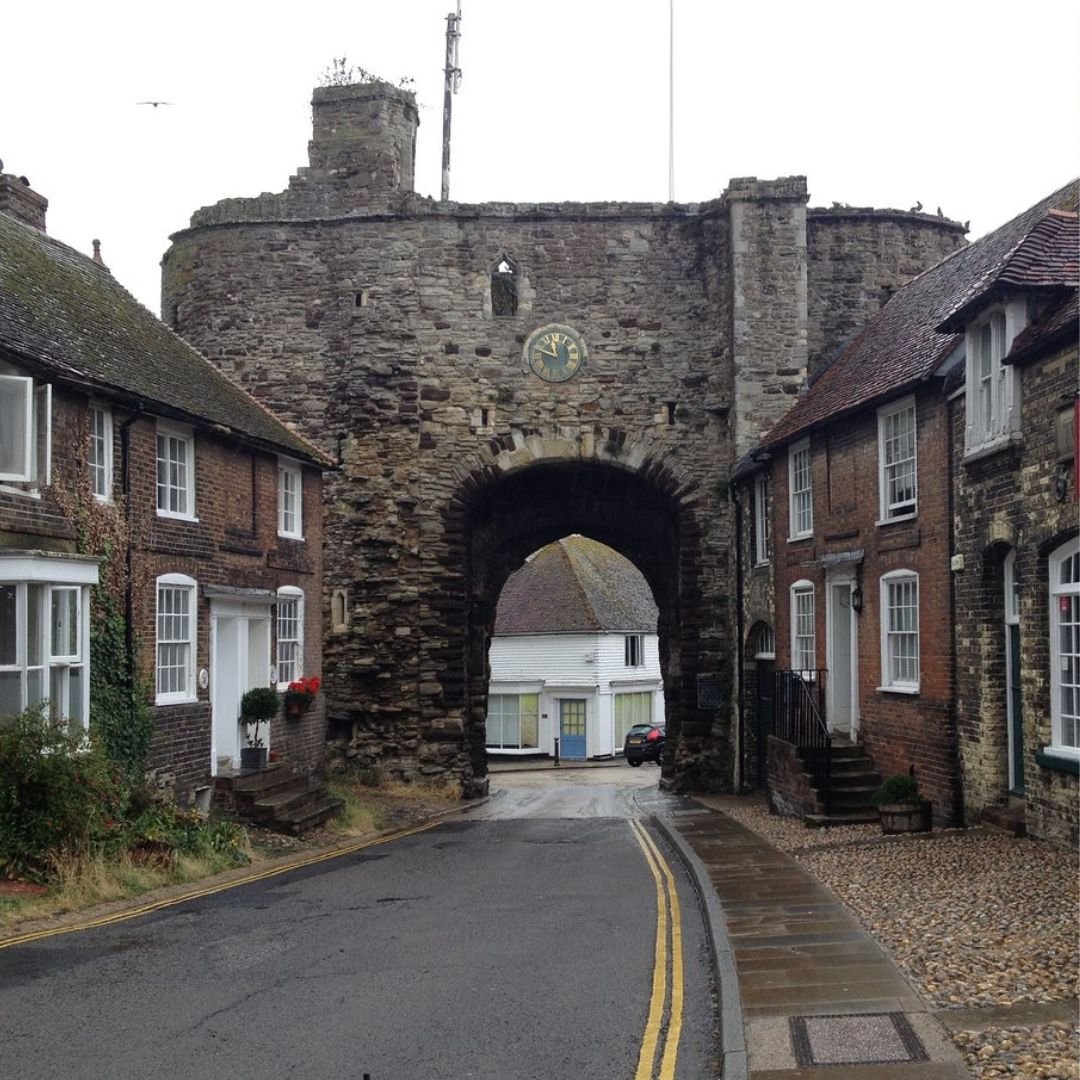Rye Landgate: Only Surviving Fortified Entrance To Rye
Rye Landgate is remarkably well preserved, as are the buildings around it.
Built around 680 years ago, it's still in use today and it’s one of the town’s most iconic structures.
The Landgate (the only surviving one of four original fortified entrances to Rye) dates from 1329 in the early years of the reign of King Edward III.
This monarch had made several grants to the town to aid in its fortification - and The Landgate is still the only vehicular route into the medieval centre of Rye.
It is described on the plaque attached to the building as having a chamber over the arch and two towers, although once there were gates, a portcullis and a drawbridge.
Rye is a lovely town and in East Sussex, two miles from the sea at the confluence of three rivers: the Rother, the Tillingham and the Brede.
Medieval maps show that Rye was originally located on a huge embayment of the English Channel called the Rye Camber, which provided a safe anchorage and harbour.
Probably as early as Roman times, Rye was important as a place of shipment and storage of iron from the Wealden iron industry.
The town of Rye is recorded in the 1086 Domesday Book as possessing 189 households, marking it as a significant settlement at the time.
As one of the two "Antient Townes" (Winchelsea being the other), Rye was to become a limb of the Cinque Ports Confederation by 1189, and subsequently a full member.
The protection of the town as one of the Cinque Ports was very important, due to the commerce that trading brought.
One of the oldest buildings in Rye is Ypres Tower, which was built in 1249 as "Baddings Tower", to defend the town from the French, and was later named after its owner, John de Ypres.
Today, it is now part of the Rye Museum.
Rye received its charter from King Edward I (pictured below) in 1289, and acquired privileges and tax exemptions in return for ship-service for the crown.
The "Landgate" (the only surviving one of four original fortified entrances to Rye) dates from 1329 in the early years of the reign of King Edward III.
Today, it is suitable only for light vehicles.
In 2015, some 25 tonnes of pigeon excrement that had built up had to be removed from Landgate Arch for fear of damaging the ancient structure.
Rye was considered one of the finest of the Cinque Ports, though constant work had to be done to stop the gradual silting up of the river and the harbour.
And in 1339, the French attacked the town and burnt down more than 50 houses and a mill.
It was at about this time that the mayor and corporation made a start on the town walls and gates, aided by money (”murage”) granted by the King Henry the III.
In 1377, the French returned to Rye for a short visit, generally attacking everything and everyone and yet again sacked Rye, this was probably the most savage of all visits as they burned practically every building in the town.
Only a few stone buildings survived.
The Landgate is the last remaining of two gates built to defend Rye from invading forces, which all started in 1066.
With the coming of bigger ships and larger deepwater ports, Rye's economy began to decline, and fishing and particularly smuggling (including owling, the smuggling of wool) became more important.
Imposition of taxes on goods had encouraged smuggling since 1301, but by the end of the 17th century, it became widespread throughout Kent and Sussex, with wool being the largest commodity.
When luxury goods were also added, smuggling became a criminal pursuit, and groups – such as the Hawkhurst Gang who met in The Mermaid Inn in Rye – turned to murder and were subsequently hanged.
During the 1803–1805 Napeleonic invasion threat, Rye, Dover, and Chatham were regarded as the three most likely invasion ports, and Rye became the western command centre for the Royal Military Canal.
The canal was planned from Pett Level to Hythe, but was not completed until long after the threat had passed.
Today, Rye is a popular tourist destination, probably best known for its picturesque Mermaid Street.
Strolling through the street feels like a journey through time, as you wander past centuries-old buildings adorned with timber beams and hanging flower baskets.
Mermaid Street is a must-see, with its crooked houses and delightful shops that transport you to another era.
While Rye's historic centre is undeniably captivating, its natural surroundings are equally breath-taking.
Camber Sands, with its golden dunes and sandy shores, is just a stone's throw away too.
If you’d like to learn more about Rye’s incredible history during your visit, we highly recommend a trip to Rye Castle Museum.
Here, you’ll learn about Rye’s history at Ypres Tower - known as Wipers Tower to locals, it’s home to Rye Castle Museum.
Discover the Tower’s roles through nine centuries of history; defence, private home, prison, mortuary and now museum.
Climb the tower to check out views over the town and out to the river Rother estuary.
There are various exhibits in the tower from Rye’s past including a model showing how the shoreline has changed, a rare smuggler’s lamp and a medieval herb garden.
The prisoner cells can also be explored!
After your trip to the museum, we highly recommend stopping off at the Mermaid Inn, a Grade II listed inn and one of the best-known inns in southeast England.
It was established in the 12th century and has a long, turbulent history.
The current building dates from 1420 and has 16th-century additions in the Tudor style, but cellars built in 1156 survive.
The inn has a strong connection with the notorious Hawkhurst of smugglers, who used it in the 1730s and 1740s as one of their strongholds: Rye was a thriving port during this period.
Some of the smugglers, their mistresses and other characters are reported to haunt the inn.
Rye has excellent reviews on TripAdvisor.
A recent visitor said: “The prettiest street (Mermaid Street) in a pretty village, Mermaid Street is full of historic buildings, picturesque nooks and crannies, and day trippers.
”Most of the houses seem to be lodgings for tourists, and most of it feels like a giant Instagram set more than part of a living village, but ignore this and focus on the buildings and view instead.
Another person added: “We will definitely be coming back, we absolutely loved our visit here, a visit to Mermaid Street is a must!”
If you enjoyed this blog post, please follow Exploring GB on Facebook for daily travel content and inspiration.
Don’t forget to check out our latest blogs below!
Thank you for visiting Exploring GB.























